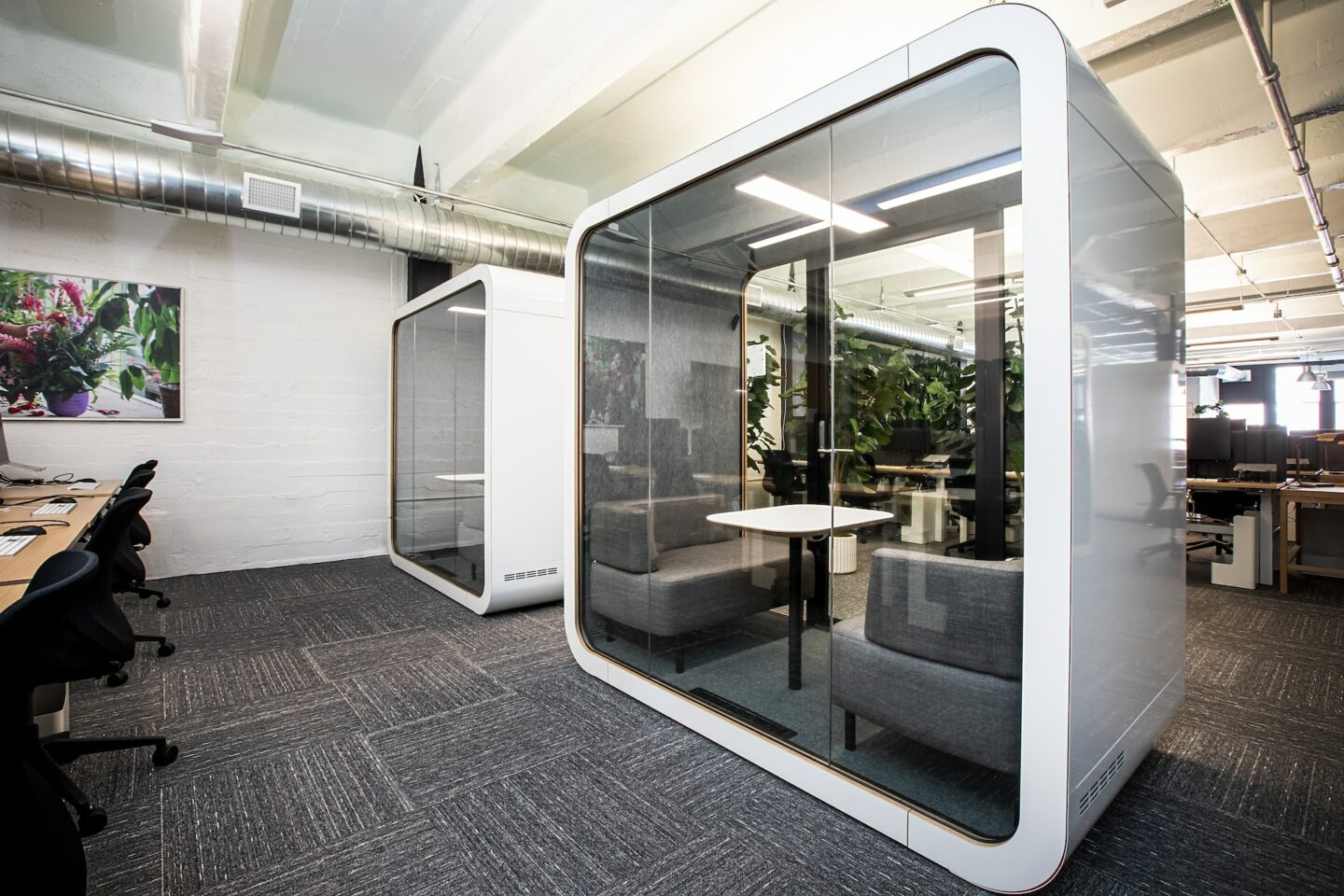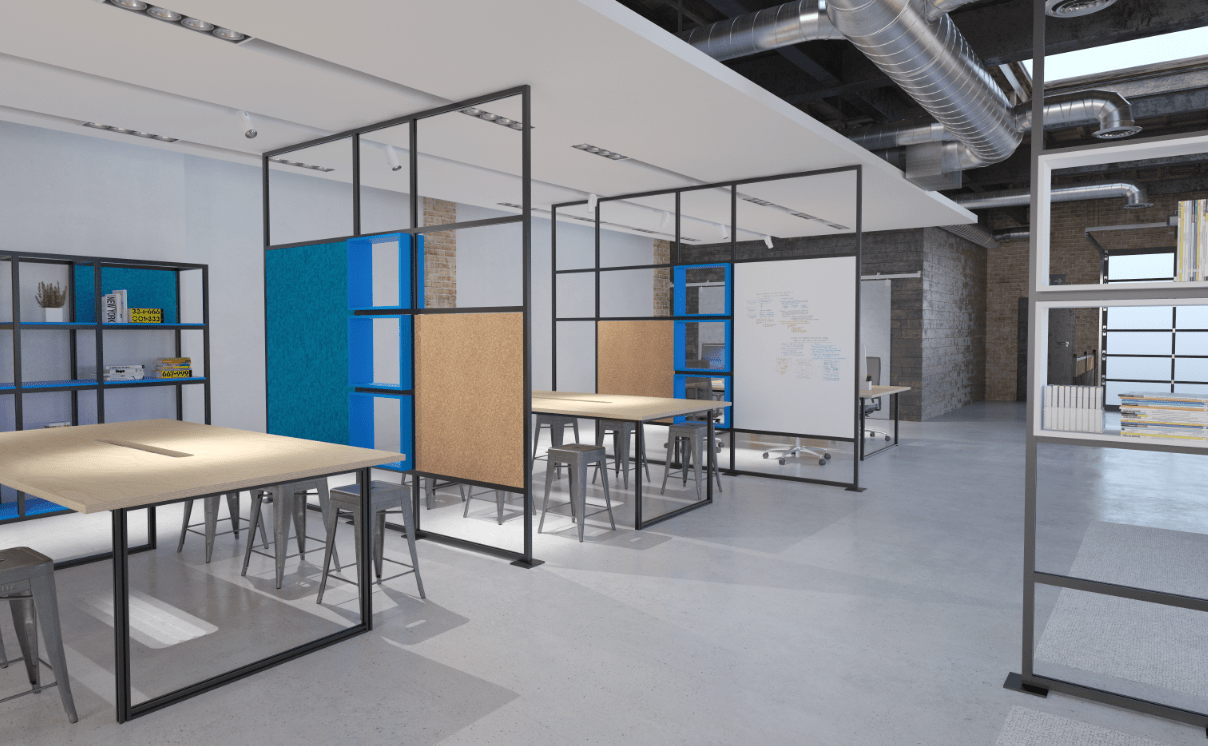
Designing Classrooms to Promote Learning and Student Wellbeing
Classroom design is a multifaceted, challenging niche within the wider interior design of public sector spaces. That is, buildings used for education need to deliver on a number of different fronts whilst meeting the needs of different groups of people simultaneously.
Studies published in the Building and Environment journal revealed that altering key aspects of classroom design and layout can actually increase learning outcomes by up to 16%, showing us that classrooms need to be designed so that they are not only comfortable and enjoyable for students but also conducive to enhancing learning and development.
This blog post will introduce some of the most effective, accessible ways in which this can be achieved in practice.
Lighting for Schools and Universities
Lighting design is a crucial aspect of the overall interior design schemes of classrooms. Without proper lighting, both students and teachers are not going to be able to reach their potential and achieve the best learning outcomes. We know that the following factors are vital to consider when specifying lighting for any interior space.
- Brightness – also referred to as the lumen output or lux level (lm), this is the measure of the amount of light emitted by a light source.
- Colour temperature (CCT) – how warm/orange or cool/blue the light emitted by a light source appears to our eyes.
- Colour rendering index (CRI) – measured on a scale of 0-100, this refers to a light source’s ability to reproduce the colours of the object or area it is illuminating, as they would appear in natural sunlight.
- Control systems – a range of technologies that enable users to adjust lighting systems in real-time to suit different requirements.
But, what role does each of these play in relation to classroom design?
Firstly, the brightness of a light source is what enables people to use spaces effectively without experiencing negative effects on their health or wellbeing. It’s important to get the brightness level correct, as a light source that is too bright or too dim can induce things like headaches, lethargy, anxiety, or problems with concentration.
LED lighting systems can be specified to operate using LED components that are optimized to perform according to the size, shape, and function of a space. Interior designers for educational facilities should embrace the support of specialist lighting designers to ensure that the light fixtures they choose for classrooms and study spaces will deliver the appropriate lux levels at both desk and floor levels.

The colour temperature of classroom lighting is also of central importance, as we know that different colour temperatures have different impacts on our psychology and physiology. The principles of human-centric design teach us that lighting systems used in schools, offices, and other working environments should be engineered to replicate the appearance of natural sunlight as authentically as possible so as to support the proper functioning of our circadian rhythms. This means using LEDs that emit light at approximately 4000K.
It’s important to note, however, that educational facilities such as universities where students may be working much later into the night will need to provide lighting that can be adjusted depending on the time of day. When it reaches evening time, for example, the lighting will need to be dimmer and warmer (have a lower colour temperature) to avoid impacting the overall health and wellbeing of students.

Integrated control systems provide an effective way of facilitating these things, enabling users to alter the brightness levels and colour temperature of the lighting in real-time to suit the needs of different students. In primary schools, for example, teachers can dim the lights when watching educational videos or using smart whiteboards. Also, as schools are held to rigorous safety standards, emergency lighting can be integrated directly into LED lighting systems.
Flexible Study Spaces
Private study pods are a particularly effective option for universities and other higher education establishments where students are required to do greater amounts of independent work. With features such as climate control, acoustic dampening, ergonomic seating, adjustable lighting, presentation screens, and power sockets, these are invaluable for students who are trying to concentrate on individual projects and for groups needing space for collaborative work.


Modular construction systems are a fantastic resource for designers, providing them with a way in which to create flexible classroom furniture that can be reconfigured to meet the needs of different year groups, activities, or extracurricular events. Modular solutions offer unbeatable scope for customization and extension depending on the school or style of teaching, meaning they enable the creation of learning environments that minimise distractions, maximise the amount of storage space and complement the design of the building itself.

Modular classroom furniture can incorporate additional decorative features such as display boards, colourful panels, whiteboards, task lighting, and storage areas to facilitate learning experiences that are involved, rewarding, and engaging.

These benefits that come from the inherent flexibility of modular furniture link to the concept of ownership. In relation to classroom design, this refers to the extent to which students and teachers feel like they own or are in control of the space around them. By allowing pupils and their teachers to rearrange furniture and incorporate different aesthetic elements (posters, colours, material finishes, and so on), they are more likely to engage with lessons.

Modular dividers are an effective, affordable way of creating designated zones within larger, open-plan spaces. This allows for groups of students to break off and work on projects cooperatively without causing a chaotic, distracting environment for others. Moreover, there is a wealth of evidence showing that changing the configuration of learning environments throughout the course of an academic year makes teaching more inclusive and encourages quieter students to participate in lessons.

Conclusions
Interior designers and space planners working within educational settings need to take a huge number of things into consideration if they are to create environments that meet the needs of both students and teaching staff.
Solutions like customizable LED lighting systems and modular furniture provide unbeatable levels of flexibility and versatility, ensuring that classrooms, universities, and colleges are equipped to support the learning of future generations.






